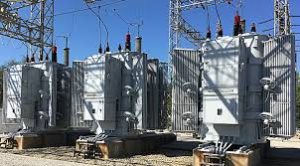In the world of modern construction, precision is key. Advancements in technology have revolutionized the way we approach building projects, with tools like GNSS (Global Navigation Satellite System) antennas playing a crucial role in ensuring accuracy and efficiency on construction sites. Let’s delve into the world of precision systems and how they are transforming the construction industry.
How GNSS Base and Rover Systems Enhance Construction Efficiency?
Exploring the differences between GNSS base and rover systems is essential for understanding how they work together to improve construction efficiency. The base station acts as a reference point, providing corrections to the rover unit to enhance its accuracy.
By integrating such systems, construction professionals can achieve higher levels of accuracy and precision in their measurements and layout tasks. This integration leads to improved project outcomes, reduced rework, and increased productivity on construction sites.
Despite the benefits, integration challenges may arise, such as signal multipath errors, atmospheric conditions affecting signal quality, and the need for proper network configurations to ensure seamless communication between the base and rover systems. Additionally, the quality and type of the GNSS antennas used play a critical role in how effectively these signals are transmitted and received, impacting the overall system performance and reliability in varying environmental conditions. Understanding antenna specifications and selection is thus pivotal in optimizing the functionality of GNSS setups in construction contexts.
GNSS Antennas and Their Role in Construction?
Understanding the functionality of a GNSS antenna or GNSS receiver is fundamental to comprehending its significance in construction. GNSS antennas receive signals from satellites to determine the precise location of a receiver on the Earth’s surface.
The benefits of using these antennas in construction projects are immense. They enable construction professionals to accurately position elements, survey terrain, and execute tasks with high levels of precision, ultimately speeding up project timelines and enhancing overall quality.
However, common challenges faced with GNSS antennas on construction sites include signal interference, obstructions blocking satellite signals, and the need for consistent calibration to maintain accuracy.
Implementing Precision Systems in Construction Projects
Benefits of incorporating precision systems in construction are substantial. These systems streamline workflows, reduce errors, and enhance project visualization, ultimately leading to cost savings and improved project timelines.
Key considerations when selecting precision systems for construction include compatibility with existing equipment, ease of use for on-site teams, and the scalability of the system to meet project requirements.
Training and skill development play a vital role in ensuring efficient usage of precision systems in construction. Providing comprehensive training programs for construction staff can optimize the benefits derived from these advanced technologies.
Future Trends in Precision Systems for Construction Industry
Emerging technologies are shaping the future of precision systems in the construction industry. Innovations like AI-assisted construction planning, drone-based site inspections, and IoT-enabled machinery are revolutionizing how construction projects are executed with precision.
Environmental impact and sustainability are key considerations in precision construction practices. By leveraging advanced systems, construction companies can minimize waste, reduce environmental footprint, and adopt sustainable construction methods for a greener future.
Challenges and opportunities lie ahead in the adoption of advanced precision systems. Overcoming barriers such as initial implementation costs, interoperability issues, and workforce upskilling will be critical for construction companies looking to stay competitive in a rapidly evolving industry.
Case Studies: Successful Applications of Precision Systems in Construction
Real-life examples showcase the tangible benefits of precision system integration in construction projects. From large-scale infrastructure developments to intricate architectural designs, precision systems have driven efficiency gains, cost savings, and enhanced project outcomes across various construction segments.
Cost savings and time benefits are significant factors driving the adoption of precision systems in construction. By improving project accuracy and streamlining workflows, construction companies can optimize resources, reduce project timelines, and deliver results within budget constraints.
Client satisfaction and quality improvements are achievable through precision construction practices. By ensuring precise measurements, accurate layout, and streamlined processes, construction firms can enhance client experiences and deliver projects that exceed expectations.





